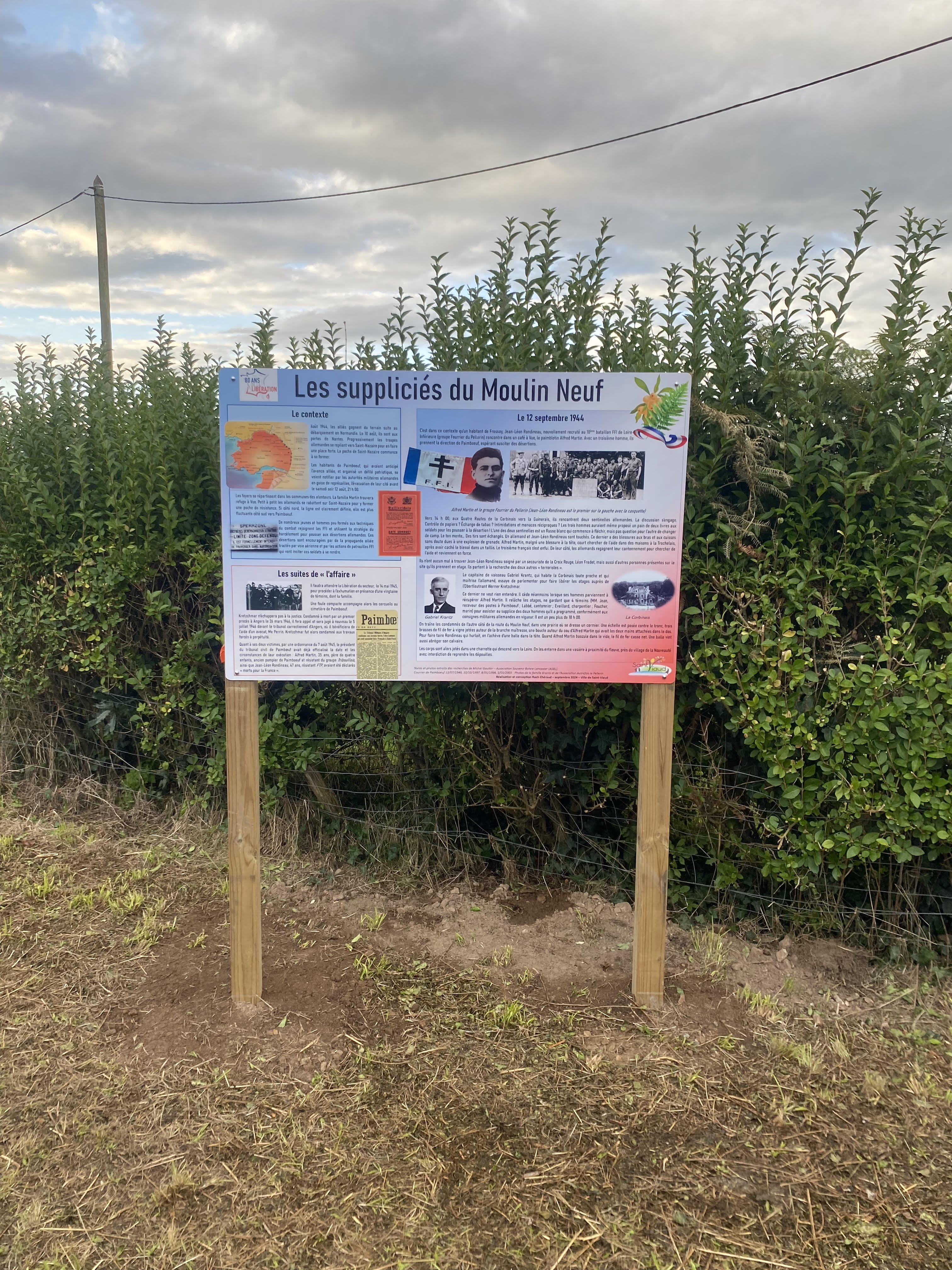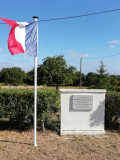The context
In August 1944, the Allies gained ground following the Normandy landings. On 10 August, they reached the gates of Nantes. German troops gradually retreated towards Saint-Nazaire, turning it into a stronghold. The Saint-Nazaire pocket began to take shape.
The inhabitants of Paimboeuf, who had anticipated the Allied advance and organised a patriotic parade, were informed by the German military authorities that their town would have to be evacuated by Saturday evening, 12 August, at 9pm, as a reprisal.
The families were dispersed to other towns in the surrounding area. The Martin family found refuge in Vue. Little by little, the Germans fell back on Saint-Nazaire to form a pocket of resistance. While the line was clearly defined on the north side, it was more fluid on the south side towards Paimboeuf.
Many young men and men with little training in combat techniques joined the FFI and used the strategy of harassment to encourage German desertions. These desertions were encouraged by Allied propaganda delivered by air and by the actions of FFI patrols, which encouraged these soldiers to surrender.
12 September 1944
It was against this backdrop that Jean-Léon Rondineau, a resident of Frossay and newly recruited to the 10th FFI battalion in Loire-Inférieure (Fourrier group from Le Pellerin) met Alfred Martin from Paimblot in a café in Vue. With a third man, they headed for Paimboeuf, hoping to encourage desertions. At around 2pm, at Quatre Routes de la Corbinais towards la Guinerais, they met two German sentries.
A discussion ensued. Checking papers? Exchanging tobacco? Intimidation and mutual threats? The three men even offered the soldiers a two-pound loaf of bread to encourage them to desert! One of the two sentries was a white Russian who was beginning to give in, but the other was not about to change sides. Tempers flared and shots were exchanged. A German and Jean-Léon Rondineau were hit. The latter suffered wounds to his arms and thighs, probably caused by a grenade explosion.
Alfred Martin, despite a head wound, ran for help to the houses in La Trochelais, after hiding the wounded man in a copse. The third Frenchman fled. For their part, the Germans returned to their billets to look for help and came back in force.
They had no trouble finding Jean-Léon Rondineau, who was being cared for by a Red Cross first-aider, Léon Fredet, as well as other people on the site, whom they took hostage. They set off to find the other two “terrorists”.
Captain Gabriel Krantz, who lived in nearby Corbinais and spoke fluent German, tried to negotiate with Obertleutnant Werner Kretzchmar to have the hostages released.
Kretzchmar would have none of it. He gave in, however, when his men succeeded in recovering Alfred Martin. He released the hostages, keeping only 4 witnesses (Messrs Jean, postmaster in Paimboeuf; Labbé, road-mender; Eveillard, carpenter; Foucher, sailor) to watch the execution of the two men he had planned, in accordance with current German military orders. It was a little after 6.00 pm.
The condemned men were dragged to the other side of the Moulin Neuf road, to a meadow where a corm tree stood. A ladder was placed against the trunk, three fathoms of vine wire thrown around the main branch, a loop around the neck of Alfred Martin, who had both hands tied behind his back. To silence the screaming Rondineau, he was shot in the head. When Alfred Martin toppled over, the wire snapped. A bullet also ended his ordeal.
The bodies were then thrown into a cart and taken down to the Loire. They were buried in a mudflat close to the river, near the village of La Nouveauté, with a ban on taking back the remains.
The aftermath of the “affair
It was not until the area was liberated on 14 May 1945 that the remains were exhumed in the presence of around twenty witnesses, including the family.
A large crowd accompanied the coffins to the Paimboeuf cemetery.
Kretzchmar did not escape justice. Sentenced to death at an initial trial in Angers on 26 March 1946, he appealed and was tried again on 5 July 1946 before the Angers criminal court, where he was assisted by a lawyer, Mr Perrin. Kretzchmar was sentenced to hard labour for life.
As for his two victims, by an order dated 7 August 1945, the president of the Paimbœuf civil court had already made official the date and circumstances of their execution: Alfred Martin, aged 35, father of four, a former Paimboeuf fireman and member of the Tribouillois Resistance group, and Jean-Léon Rondineau, aged 47, an FTP Resistance fighter, had been declared “dead for France”.
View this post on Instagram A post shared by Saint Brevin émotions brutes (@saint.brevin.tourisme) ” target=”_blank”>Our confidential episode of Saint-Brevin émotions brutes can be viewed here
| Period (s) | Morning | Afternoon | Opening day | Closing day |
|---|
-
Museum category
-
Military



